Rose rosette disease is a rose killer with no cure.
An infected rose starts putting out fast-growing infected shoots that are often burgundy-colored or sometimes lime green. The shoots are generally ultra-thorny and have bumpy or pebbly leaves. Flowers are deformed. All the infected growth is very, very different from uninfected growth.
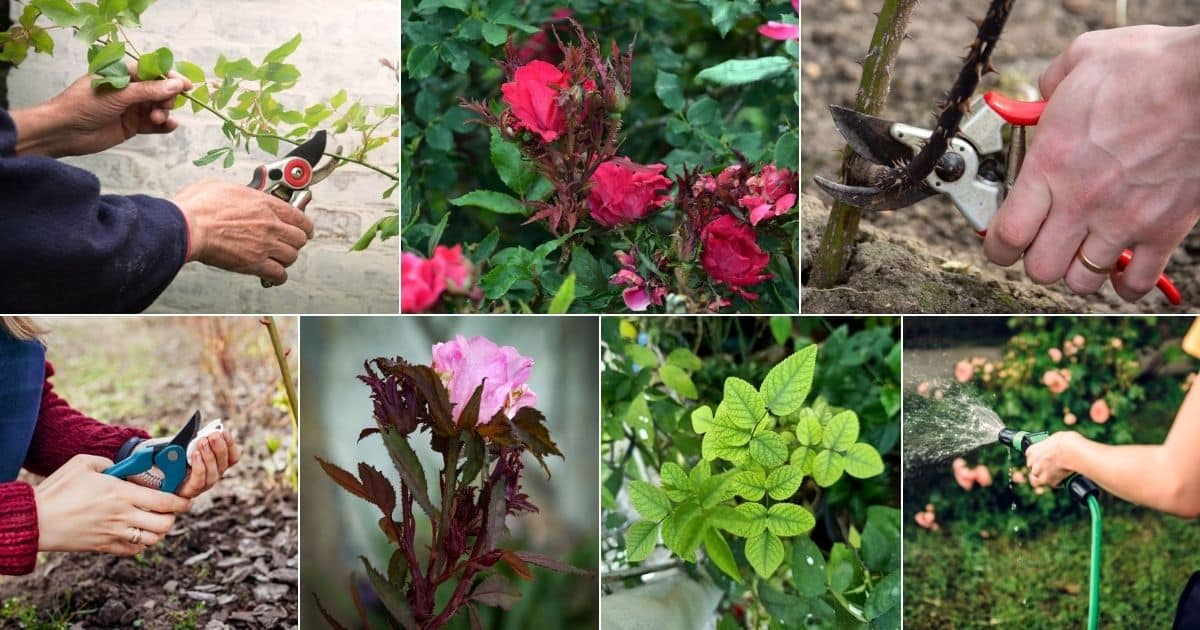
If left unchecked, a rose infected with rose rosette disease eventually starts sprouting ugly, infected growth from all parts of the rose. The rose eventually dies of the disease within two to four years.
The rose rosette virus has no cure, so it’s important to find ways to protect the rose from it.
Jump to:
- “You Must Dig Up and Destroy Any Rose Infected with Rose Rosette.” -- True or False?
- About The Mites That Carry the Rose Rosette Virus
- 1. Cut Off and Destroy Any Infected Rose Parts
- 2. 68 Percent is a Pretty Decent Percentage
- More Helpful Ways to Protect Your Roses from Rose Rosette Disease
- 3. Ornamental Grasses to the Rescue
- 4. Create Mixed Plantings Around Your Roses
- 5. Report Your Rose Rosette Cases to Roserosette.org
- 6. Clean Off Your Rose Pruners Between Roses
- 7. Avoid Leaf Blowers
- 8. Give Your Rosebushes Some Space
- 9. Prune Roses in Late Winter or Early Spring
- 10. Eliminate Stands of Infected Roses on Your Property
- 11. Keep Your Roses Healthy
- 12. Spraying Miticides on the Roses Isn’t Entirely Effective
- 13. Instead, Spray Roses with Horticultural Oil or Dormant Oil
- 14. Spray Roses Weekly with the Water Hose
- 15. Some Japanese Beetle Safeguards Might Also Prevent Mite Attacks
“You Must Dig Up and Destroy Any Rose Infected with Rose Rosette.” -- True or False?
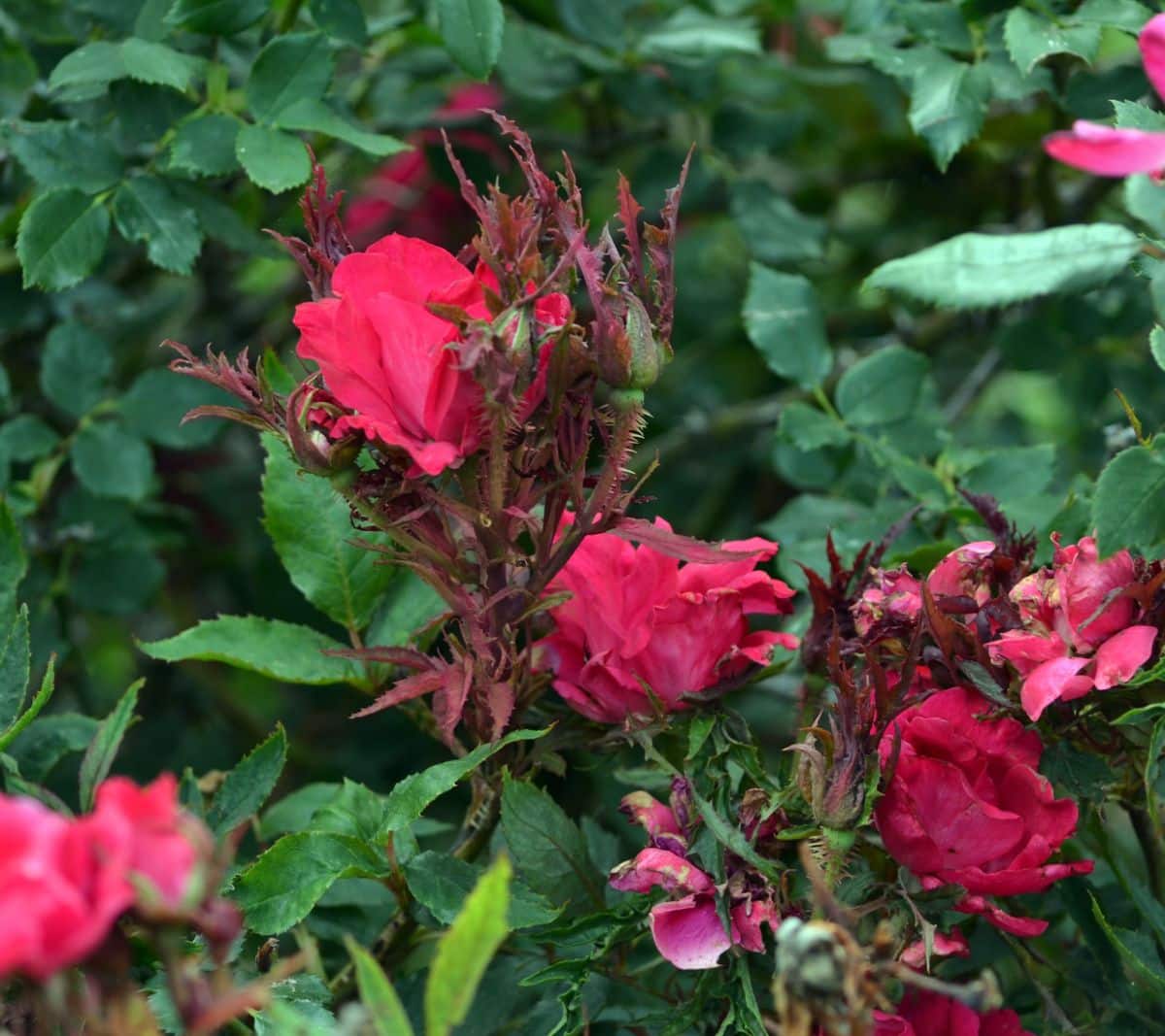
That’s the advice I’ve heard being given by a lot of rosarians who have been working with roses for years, even decades.
You have an obligation to keep the other roses from catching rose rosette, they say, so unfortunately, the only thing you can do when a rose is infected with rose rosette is to dig up the entire rose and destroy it.
I disagree.
I kept 300 roses thriving in a municipal rose garden infested with rose rosette disease – not just alive, but thriving and looking beautiful.
Even though rose rosette disease kept trying to come back, I was able to keep it from killing off my roses.
Observation is key. Being proactive is key. And it helps to use several lines of defense.
We’ll talk about the most important line of defense in a second.
About The Mites That Carry the Rose Rosette Virus
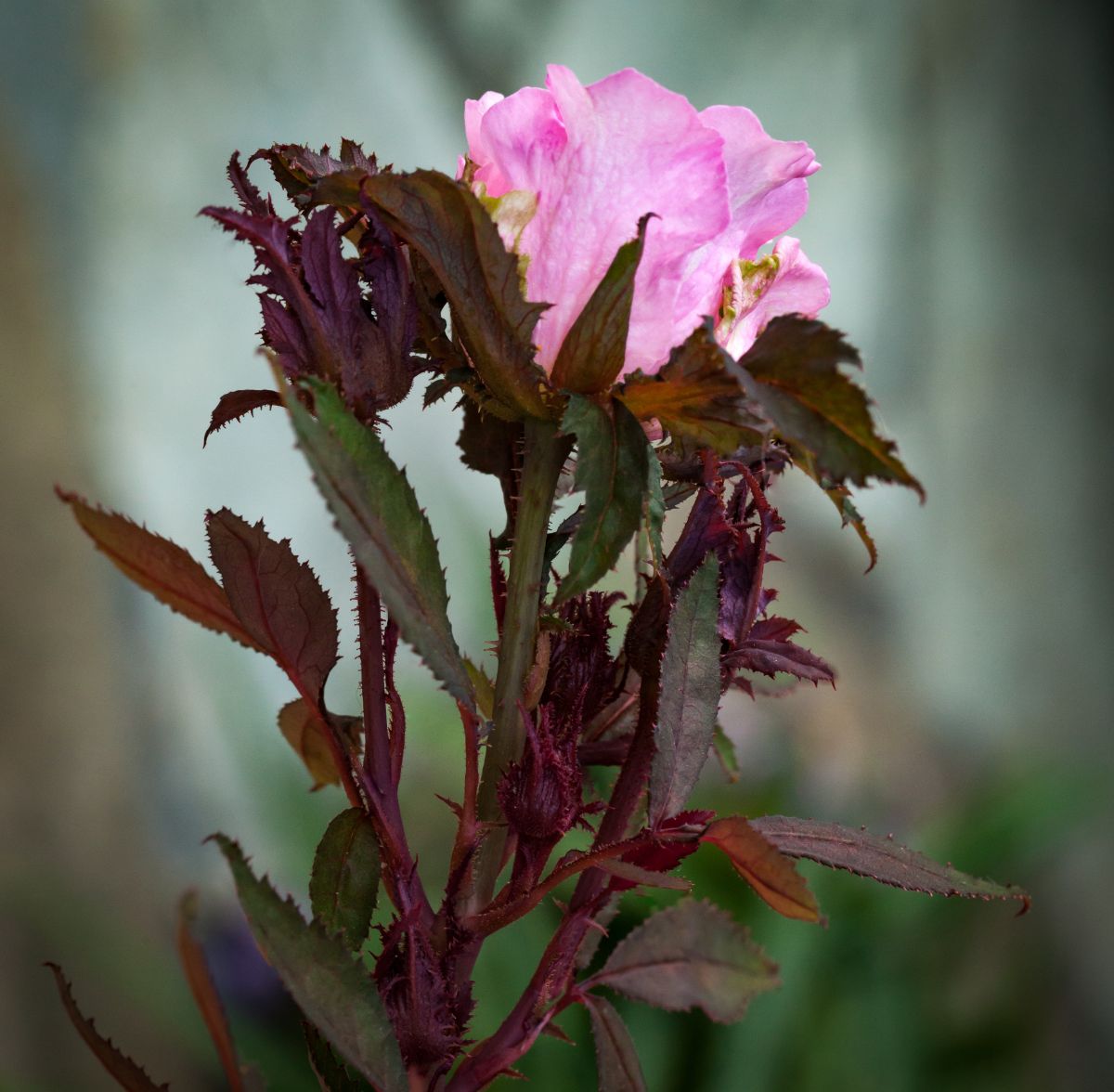
Real quick, though, I’m going to take a moment to talk about the mites that spread the disease – because this is going to help you fight off the disease later on.
Rose rosette virus doesn’t just hop from one rose to another on its own. It’s spread by microscopic wingless mites that “balloon” as spiders do – that is, they let themselves be carried by air currents from one plant to another. If the mites land on a rose, they start feeding, transmitting the virus into the rose as they do.
Since you can’t see the mites, you can’t tell they’re there until you see a sprig of infected growth appear, usually near the top of the rose.
Rose rosette disease benefits the mites because infected growth consists of a bunch of tender new shoots at the top of the plant – which means lots of soft, tender leaves to suck rose juice out of (while, presumably, transferring more viruses into the rose). High populations of mites will congregate on these infected parts.
So here’s the most useful tool in your arsenal.
1. Cut Off and Destroy Any Infected Rose Parts
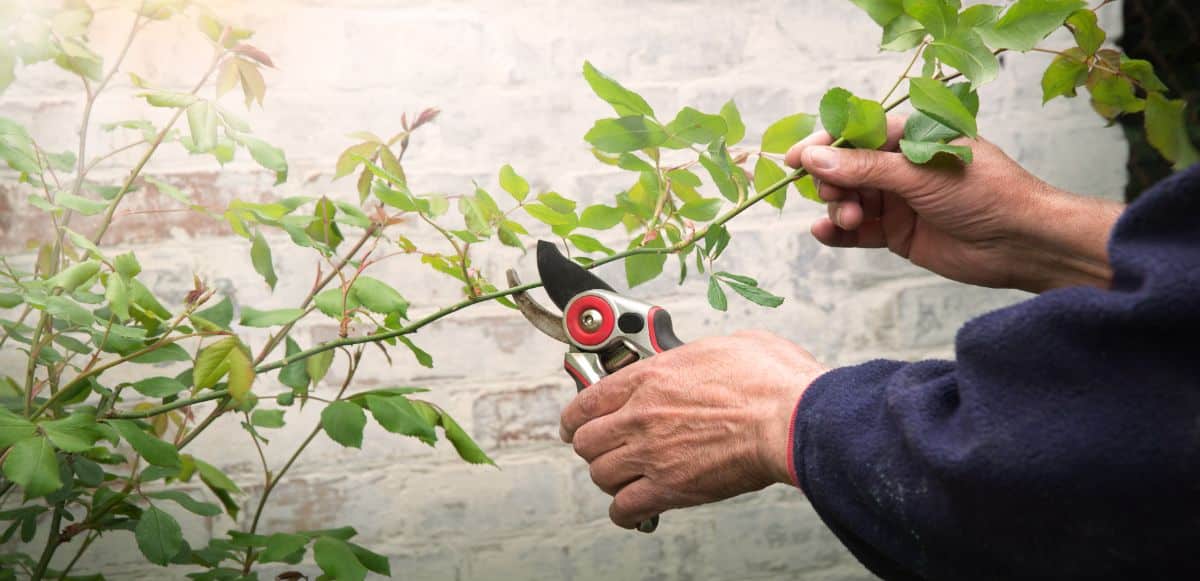
This is one of the biggest ways you can stop rose rosette in your garden, but you have got to be on top of it.
Fortunately, a lot of “staying on top of it” involves just being outside and looking at your roses a lot. That’s enjoyable.
So when you’re outside looking at your roses, and you notice a new deformed growth of rose rosette, then it’s time for you to spring into action.
- Get a plastic or paper bag and your rose pruners.
- Put the bag over the infected part, 12 inches past the lowest point of infection, and hold the bag tightly closed.
- Cut that part of the rose off!
- Get it out of the garden and dispose of it by shooting it into the sun (or putting it in the trash). Don’t compost it unless you want to reintroduce mites back into the garden later.
- Then – watch that rose like a hawk for any new infected growth!
- If new symptoms appear on the rose later, then cut them off again – except this time, go to the bud union or the base of the rose and cut the whole cane off.
2. 68 Percent is a Pretty Decent Percentage
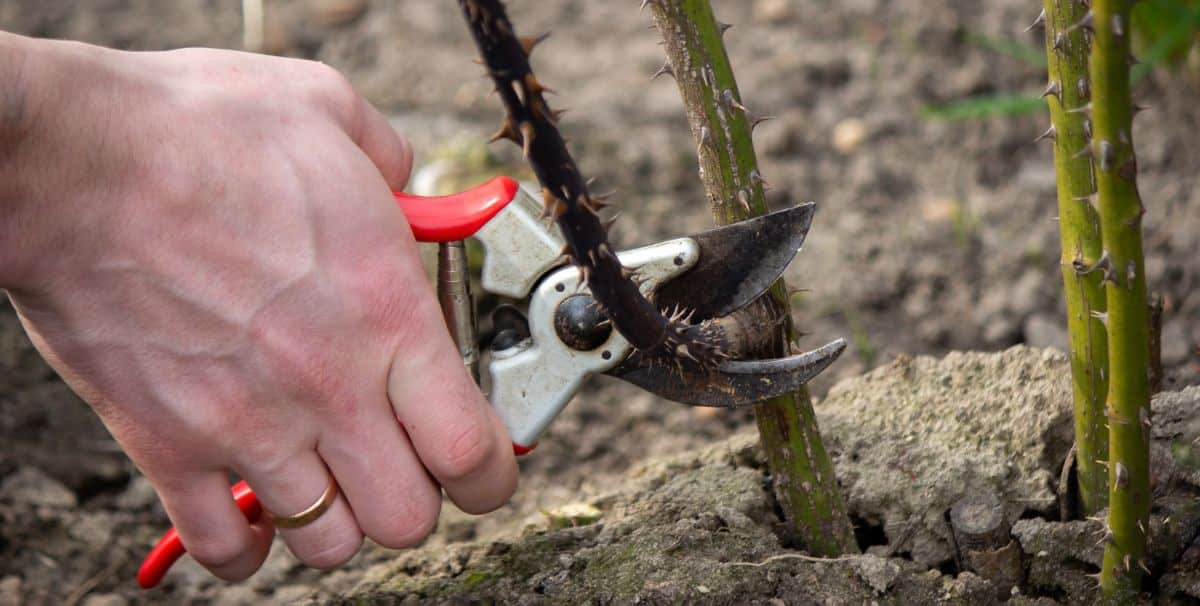
Many rosarians use this strategy to save diseased roses.
A study shows that if the diseased portion is cut off as soon as symptoms appear, 68 percent of the roses were free of virus symptoms one year later. If pruning was delayed for four to six weeks, 72 percent of the roses had rose rosette symptoms within a year.
This method is discouraged because even when if you caught the disease early, 32% of roses were reinfected within the year. But I think the method should be encouraged because 68% of the roses were NOT infected – and that’s not a bad number when you’re dealing with an otherwise fatal virus.
Not everybody has the liberty to cut back diseased canes. Obviously, if you are running a wholesale rose operation, or selling roses, then it’s unfortunately necessary to get rid of diseased stock.
Cutting off infected foliage as soon as it appears, instead of digging up the whole rose, is the most sustainable way to fix the issue. The rose rosette virus takes some time to move down the cane as the infection moves into the rose, so cutting off the cane well below where the growth appears allows you to trap the infection before it spreads.
Cutting off the cane also takes away the tender, juicy foliage that the mites love to congregate on – and gets a whole population of mites and their eggs out of your garden.
And you get to keep your rose.
More Helpful Ways to Protect Your Roses from Rose Rosette Disease
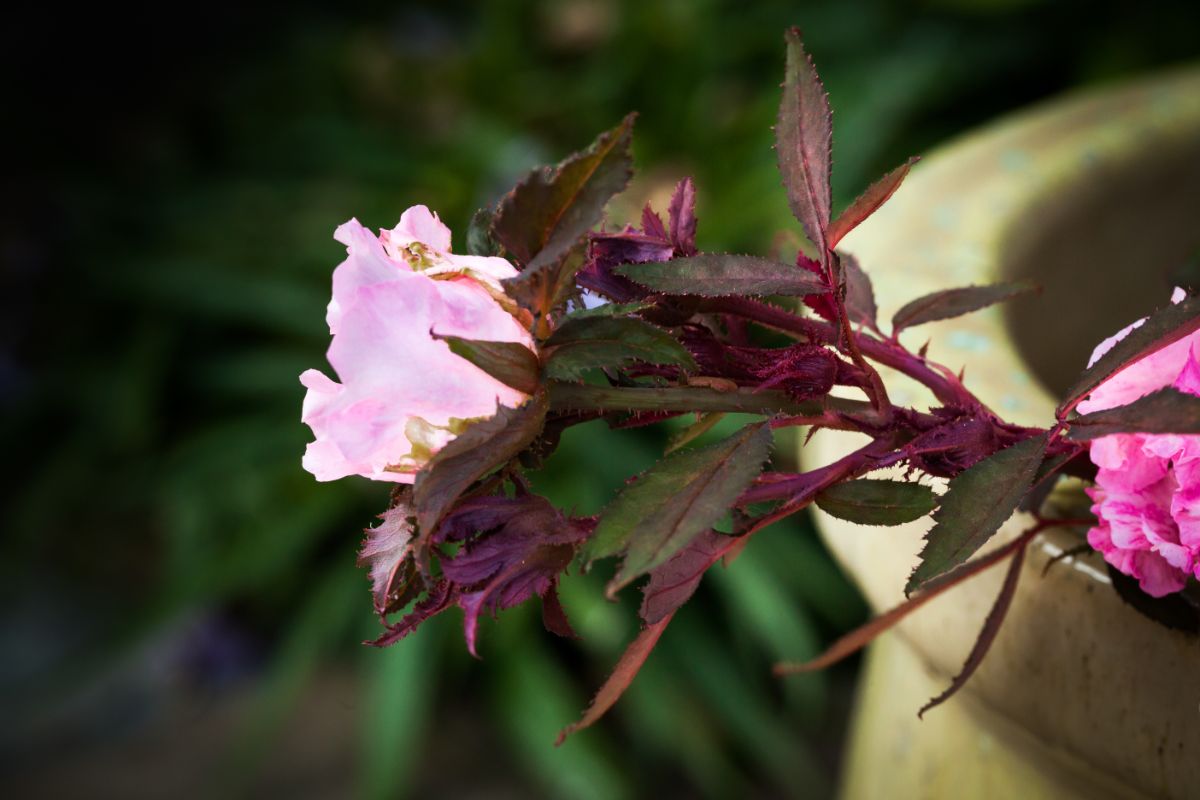
Focusing solely on killing the mite is not the answer. Instead, focus on a number of powerful but simple ways at your disposal to protect your roses. When you use a variety of different approaches, you can catch the disease, baffle the mites, and protect your roses.
Here are a bunch of different approaches that are fairly easy to implement (and some of them add extra pizazz to your garden). If you use a variety of these approaches throughout the year, you should be able to keep rose rosette off your roses more successfully.
3. Ornamental Grasses to the Rescue

A promising intervention to keep roses from getting RRD is to plant a living fence, or a border of tall plants, around the roses.
Researchers at the University of Tennessee Extension planted roses inside and outside a ring of tall ornamental grasses (Miscanthus sinensis). For the roses inside the barrier, the grasses lowered rose rosette incidents by 77 percent.
Apparently, these tall grasses and plants will catch or slow down the windborne mites before they can reach the roses. Ornamental grasses that are over 10 feet tall are an excellent option, and they’re a decorative plant that looks great. Hedges also work.
4. Create Mixed Plantings Around Your Roses

Growing Miscanthus grass everywhere is probably a little problematic, but growing other plants, like coneflowers, yarrow, Russian sage, and alyssum, among the roses has so many benefits besides adding a great deal of beauty.
Intermixing plants liven up the garden, make it harder for the mites to get around, and attract beneficial insects and mites that can target the rose rosette mite.
5. Report Your Rose Rosette Cases to Roserosette.org

Roserosette.org is an organization that has come together to research the disease while keeping an eye toward developing roses that are resistant to RRD. They have a great deal of helpful information on the site that you can access.
There’s a distribution map on the website that shows counties in the United States where rose rosette has been confirmed, and another place on the website where you can submit information about rose rosette in your vicinity. If you see an infected rose, take a picture of it and report it to them. Citizen reporting will help them with their research.
6. Clean Off Your Rose Pruners Between Roses

The rose rosette virus can be spread by grafting and possibly by being carried from one plant to another with pruners. Keep your pruners sanitary between roses by wiping them down with a 70% solution of rubbing alcohol, or spray them with a disinfectant like Lysol. Good sanitation between roses is just a good idea overall.
7. Avoid Leaf Blowers
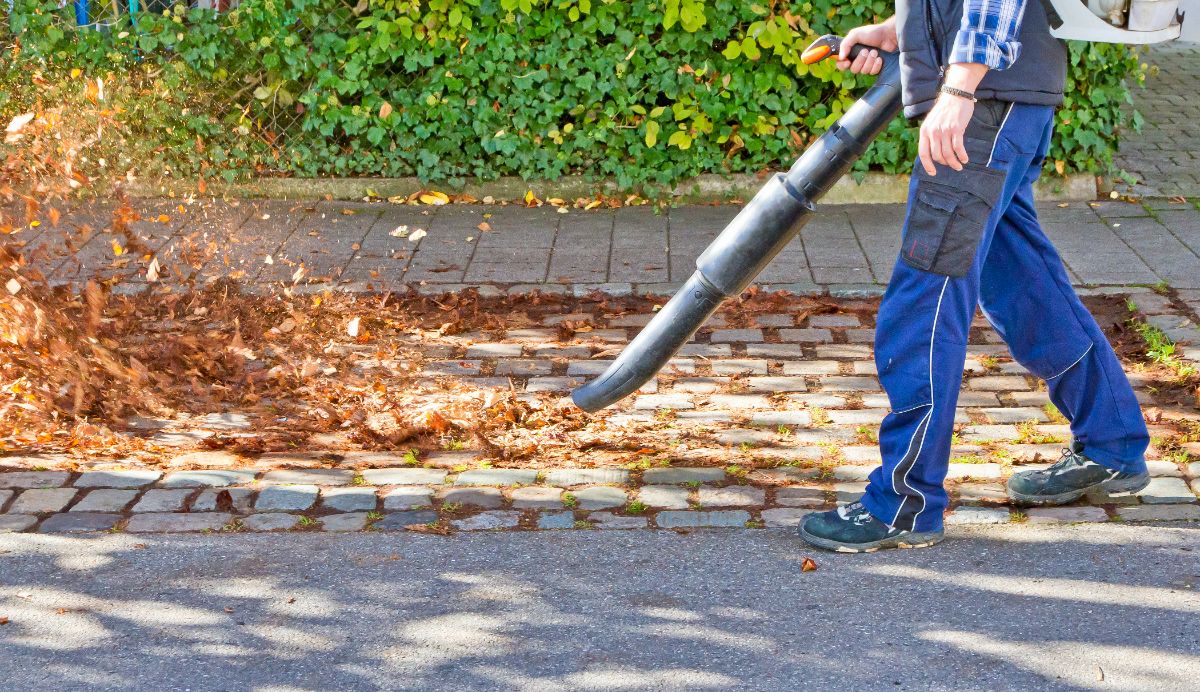
The mites that spread the disease are carried from plant to plant via the wind – so using leaf blowers around your roses might be helping to spread the mites that carry the disease!
If you use the leaf blower to keep your garden paths clear, swap it out for a broom instead.
8. Give Your Rosebushes Some Space
When planting roses, add a little more space between them to make it a little more difficult for mites to move from rosebush to rosebush. (That should give you an excuse to plant some perennials around your roses anyway.
9. Prune Roses in Late Winter or Early Spring

Mites will hunker down in flower buds and hide in hips over the winter. Trimming these off before the spring growth begins will help to get them out of the garden before they can infect anything.
10. Eliminate Stands of Infected Roses on Your Property

Multiflora rose has long been a place where rose rosette mites congregate – a kind of mite headquarters if you will. Taking out these stands of multiflora rose will discourage that.
But infected landscape roses can also be a depository of rose rosette if they’re not checked for the virus and if infected plants are not removed.
11. Keep Your Roses Healthy
Regular watering, proper fertilizing, adding compost and mulch to the soil, and deadheading the rose are just regular maintenance tasks that help keep roses happy. When you live a healthy lifestyle and take good care of yourself, and lower stress, you’re less likely to get sick. A rose is very much the same.
12. Spraying Miticides on the Roses Isn’t Entirely Effective
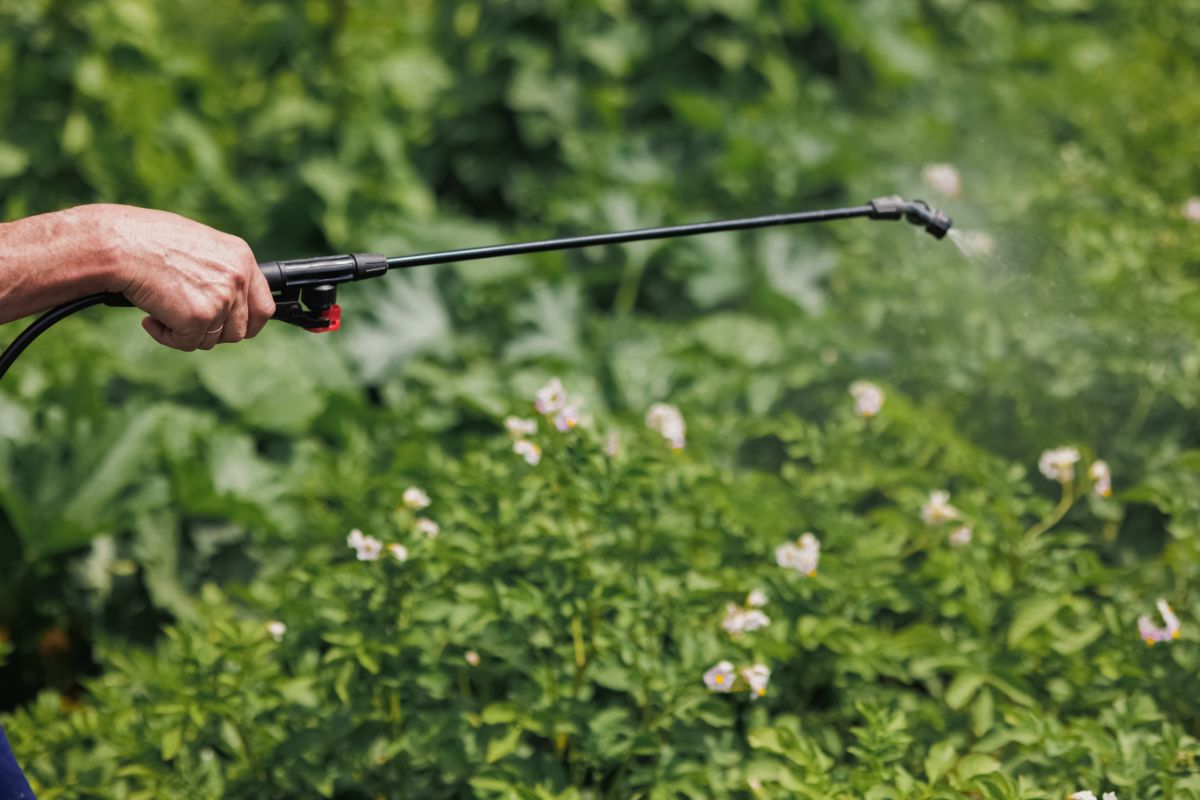
Miticides, when sprayed weekly, seem to help lower the incidence of rose rosette disease.
The only problem is, commercial landscapers and nursery professionals have access to better chemicals. Miticides for homeowners are not entirely effective.
Also, because the mite is microscopic, you really have to cover the plant enough to penetrate the mites’ hiding places in the buds on the growing tips of the roses.
A better choice would be horticultural oil sprayed monthly. These controls help to preserve the naturally-occurring enemies of the mites.
13. Instead, Spray Roses with Horticultural Oil or Dormant Oil
This is a late fall, early winter, and early spring task for rose growers for your garden-variety pests and diseases.
Horticultural oil is a lightweight oil that can be sprayed when the temperatures are cool, and there are leaves still on the plant. Dormant oil is a heavier concentration of horticultural oil and is sprayed once the leaves are off, and the rose is dormant.
These off-season sprayings are used to keep blackspot and powdery mildew at bay, as their spores are smothered by the oil.
But you have a spring advantage.
In early spring, when the buds begin to break, overwintering female mites will emerge from under the scales that cover the buds and from other hiding places around the rose to lay eggs and feed on new leaves.
Hit your roses with a spring spraying 7 to 10 days before bud break, followed by another one about a week later at bud break. This specifically targets rose rosette mites while keeping beneficial arthropods that prey on the mites out of the line of fire.
Random sprayings throughout the year are not as effective as a few targeted sprayings when the mite population is most vulnerable.
14. Spray Roses Weekly with the Water Hose

This control method, used for infestations of spider mites, aphids, and other noxious pests, might also help keep mite numbers down before they can accumulate on the new growth.
15. Some Japanese Beetle Safeguards Might Also Prevent Mite Attacks
Sometimes you can get a little synergy from using one method of control against a second insect pest.
Japanese beetles, which sail in by the hundreds and chew your rosebushes down to nubbins through the summer, also are one of those pests that are hard to manage.
Some people have used kaolin clay to suppress beetle attacks. This is a fine clay (about the same clay used in kitty litter) that is sprayed on plants to deter the beetles from eating them. Kaolin can also deter mites.
However, the clay needs to be applied frequently – but you also have to give your plants a break from it so they don’t get stressed because it also inhibits photosynthesis.
Fine mesh netting is also used at the height of the beetle season to protect the rose (especially blossoms) against Japanese beetles. The netting can also help keep the mites at bay to some extent.
Research is ongoing, but these methods in slowing the spread of rose rosette disease have been helpful so far and should help you keep your garden roses alive.

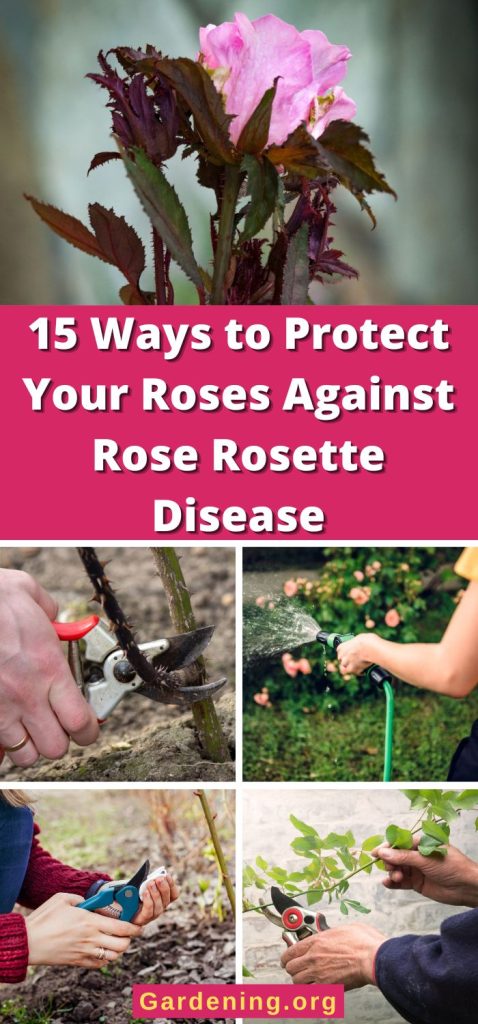

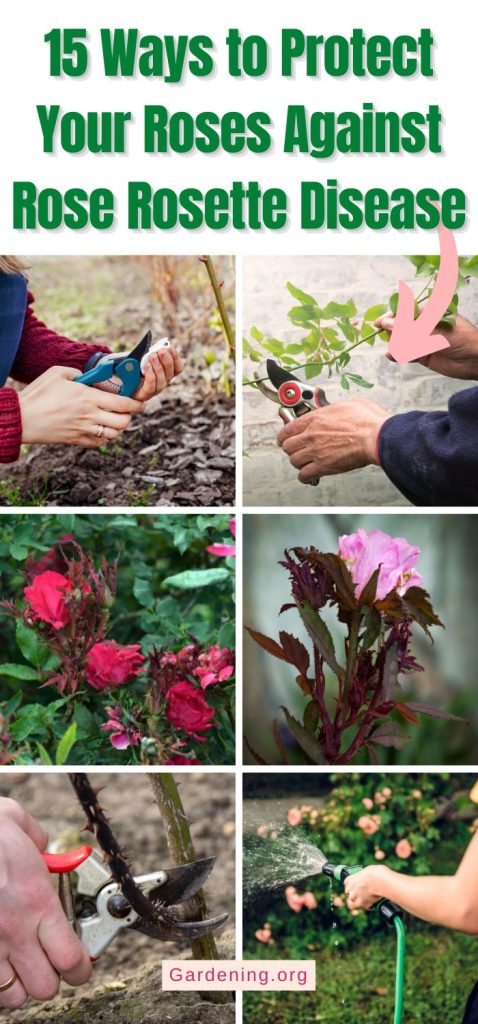
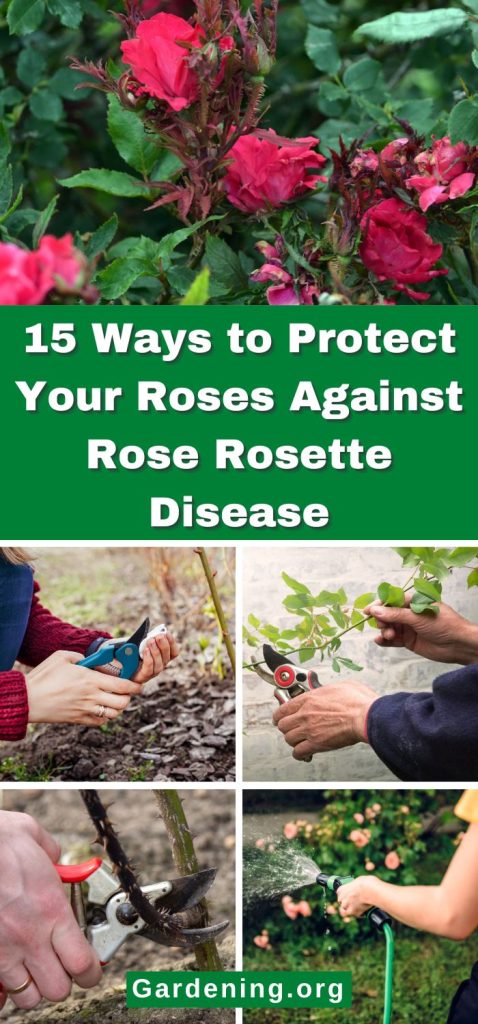




Leave a Reply